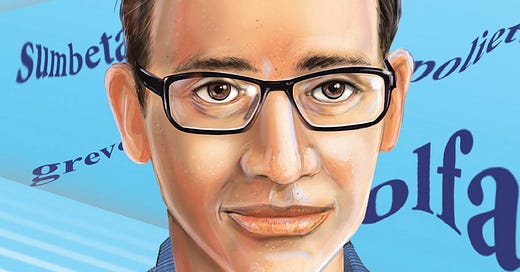This guy paved the way for AI/ML by creating CAPTCHA, reCAPTCHA & Duolingo while making billions in the process!
Remember those squiggly letters you had to type into a website to prove that you’re a human? Those 30 seconds of frustration as you tried accessing the website? What if I told you that your efforts did not go to waste. What if I told you that those innumerable 30 seconds of frustration helped digitize all the books we read online today. Interesting, right? Well, this is just the tip of the iceberg. What is even more interesting is the fact that the inventor of CAPTCHA utilized the same business model to create a multi billion dollar publicly listed startup! This is the story of Luis von Ahn, the man behind CAPTCHA, its successor reCAPTCHA and Duolingo, one of the most popular language learning platforms in the world while paving the way for AI/ML to take over the world.
A lecture on profit!
Since colleges and universities are about to open soon, in this episode, Bhavjeet and Anirudh talk about some interesting opportunities catering to student communities. Check out the different ideas in the episode:
Our story begins at the start of the millennium in 2000, when Luis von Ahn had just started his PhD in computer science at Carnegie Mellon University. He was attending a seminar by the chief scientist at Yahoo where he came to know about one of Yahoo’s biggest problems - fake email accounts and spamming due to automated bots. Luis was able to drill down to the core problem behind this - Yahoo’s inability to differentiate between humans and bots. His solution, CAPTCHA, was to introduce a string of letters to type to filter the bots out. Luis decided to give away the idea for free in order to gain widespread usage. As soon as CAPTCHA was introduced, it gained mass adoption across the internet since it was so effective.
Although he had given away the idea for free, Luis found an ingenious way to monetize his idea. He had become used to being bombarded with complaints from his friends at parties who detested those 30 seconds spent filling the letters multiple times a day. During one such conversation, it occurred to him that millions of people across the world were wasting 30 seconds of valuable human labor filling CAPTCHA. On the other hand, even the most state of the art image recognition softwares were unable to identify 30% of the letters scanned from books. What if these hundreds of thousands of hours of wasted human labor filling CAPTCHA could be utilized to digitize the world’s libraries!
In order to test this idea, Luis struck a deal with the New York Times to digitize their past 100 years of articles. The trial’s success soon prompted Luis to find more deals to create a sustainable revenue stream for CAPTCHA. One of the first major websites that contributed significantly to the digitization of our books was named onlinebootycall.com. No surprise there! As they say, the rest is history. CAPTCHA didn’t just help digitize the world’s libraries, it also helped train sophisticated image recognition software that were struggling to correctly identify information from printed words. The newer version, reCAPTCHA was introduced in 2007 that relied on identifying information from real world images. Since bots had caught up to CAPTCHA due to the advancements in image recognition by CAPTCHA, it was upgraded to reCAPTCHA that in turn helped train the latest image recognition software, the likes of which are used in autonomous vehicles.
But Luis was not done here. In 2011, he launched the popular language learning platform Duolingo. The platform helps over 42 million people learn from over 30 languages via bite sized lessons every single month. The company is listed on the Nasdaq with a market capitalization of over $6.5 billion. What is interesting to note here is that Luis utilized the same business model he has used to monetize CAPTCHA & reCAPTCHA. Since Luis wanted to keep the platform free to use, he decided to find an alternative to expensive subscriptions. He did so by using the millions of people on the platform to help translate content into multiple languages, thus helping train AI/ML models learning how to translate multiple languages. This is perhaps one of the best examples of design thinking I have ever seen in the tech industry. Luis von Ahn was single handedly able to not just create 3 world changing tools, but also propel the AI/ML sector to what it is today but utilizing the same business model for over 2 decades!




Some of the greatest ideas whose implications might not be understood until we see it's applications making our lives even better.